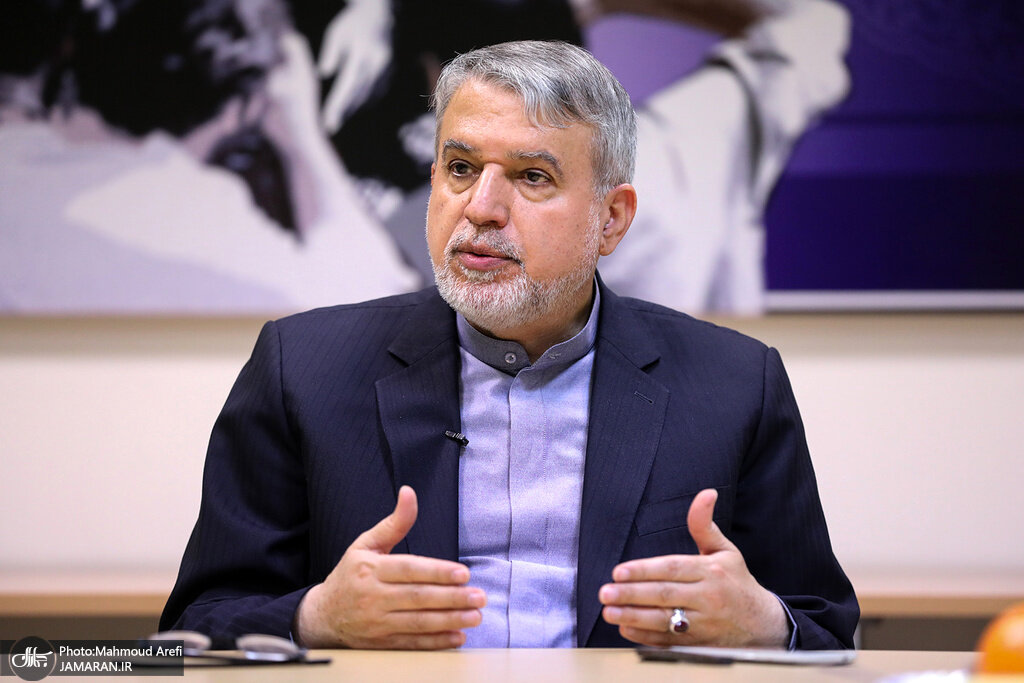Minister underlines marine tourism, soft power and global ties

TEHRAN - In a televised interview on Monday evening, Seyyed Reza Salehi-Amiri, Iran’s Minister of Cultural Heritage, Handicrafts, and Tourism, shared insights into the nation’s tourism strategy, highlighting recent achievements and ambitious goals for the future.
Salehi-Amiri said that Iran welcomed 6.382 million international tourists during the last Iranian year (which ended on March 19) and aims for a 10% annual growth in arrivals.
“We have the capacity to attract up to 15 million more tourists annually, but this requires significant improvements in infrastructure, including transportation, accommodation, and financial services,” he noted.
Tourism and soft power
The minister underscored the role of cultural heritage as a form of “soft power,” capable of fostering national pride and international recognition.
“Iran’s strength lies not only in its historical legacy but also in its ability to share this legacy with the world,” he said.
He also discussed Iran’s ranking as the seventh most attractive country for tourism, according to World Bank data, though domestic studies place Iran third globally.
Iran’s diverse offerings, ranging from cultural heritage and natural wonders to marine tourism, contribute to its unique standing, the minister said.
Cultural heritage recognition
The minister emphasized Iran’s rich cultural heritage, stating that 48,000 sites (as well as monuments and relics) have been registered nationally, with 28 tangible and 27 intangible assets already on UNESCO’s World Heritage list. Additionally, 48 more sites are pending global recognition, the minister added.
Despite a lack of registrations during the first 18 years after the [1979] Islamic Revolution, we are confident that Iran will rank among the top three countries in the world for registered heritage sites in the coming years, he said.
Elsewhere in his remarks, Salehi-Amiri highlighted the need for greater investment in preservation and restoration, citing a shortage of resources and skilled personnel. He also called for more efforts to engage younger generations and the global audience through digital platforms to showcase Iran’s extensive cultural assets.
Marine and regional tourism
Salehi-Amiri revealed plans to prioritize marine tourism as part of Iran’s broader blue economy strategy.
This includes discussions with military authorities in the Persian Gulf island of Abu Musa to allocate areas for tourism development, as well as plans for a 1,200-hectare tourism zone along the Makran coast, the minister explained.
“New cruise routes between Iran and the Caucasus region are also under consideration, with infrastructure development underway in northern ports.”
Strengthening global ties
Iran aims to enhance its tourism cooperation with key countries, focusing on regional neighbors and emerging markets in East Asia, including China and India.
A meeting with China’s Minister of Tourism is planned to develop bilateral initiatives, the minister said.
Salehi-Amiri also stressed the importance of portraying Iran as a safe destination to counter negative perceptions.
Infrastructure development
The minister highlighted Iran’s efforts to expand its hospitality sector, with plans to open 100 new hotels annually, adding to the current 1,430 facilities. He also called for removing investment barriers to accelerate growth in the sector.
“We must use our national potential to reshape perceptions of Iran and position ourselves as a leading destination for global travelers,” Salehi-Amiri concluded.
AM
